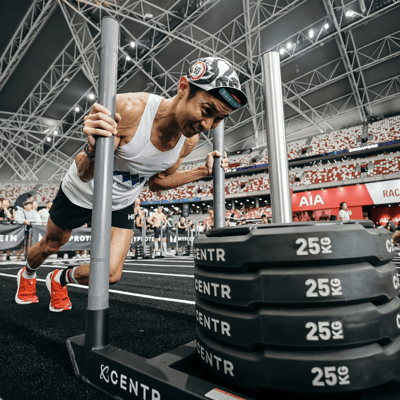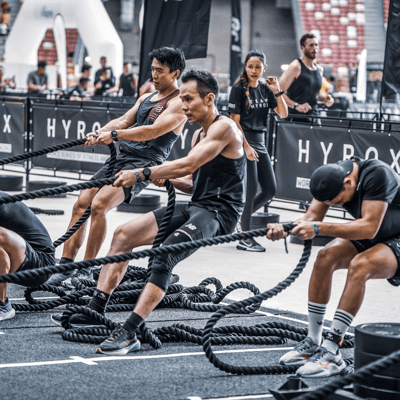Preparing for HYROX? Here’s How to Train Smart and Avoid Overuse Injuries
1. Respect the Volume: Progressive Load Matters
Stick to the “10% rule” — increase your total weekly load (distance, weight, reps) by no more than 10% at a time. Use periodisation: cycle through high, moderate, and lower-intensity weeks to allow for recovery and adaptation.
.png?width=400&height=400&name=blog_%20Preparing%20for%20HYROX_%20Here%E2%80%99s%20How%20to%20Train%20Smart%20and%20Avoid%20Overuse%20Injuries%20(3).png)
2. Balance Strength and Endurance Training
Structure your week with intentional hybrid sessions. Pair heavy lifting with shorter run intervals, and save your longer runs for days with lighter strength or mobility work.
3. Pay Attention to the “Little” Niggles
Track your training, pain levels, sleep, and fatigue in a simple journal or app. If you notice a trend — even a subtle one — address it early. Scaling back now beats sitting out later.

4. Make Prehab and Recovery Non-Negotiable
Incorporate targeted mobility (hips, ankles, thoracic spine), glute activation, and core stability drills into every warm-up. Post-training, prioritise recovery: quality sleep, solid nutrition, and occasional hands-on treatments (like compression, massage, or physio).

5. Cross-Train to Build Longevity
Don’t just rest — replace. Modalities like cycling, rowing, swimming, or the SkiErg allow you to stay fit while giving overworked tissues a chance to recover.
.png?width=400&height=400&name=blog_%20Preparing%20for%20HYROX_%20Here%E2%80%99s%20How%20to%20Train%20Smart%20and%20Avoid%20Overuse%20Injuries%20(2).png)
6. Train Smart, Not Just Hard
-1.png?width=400&height=400&name=blog_%20Preparing%20for%20HYROX_%20Here%E2%80%99s%20How%20to%20Train%20Smart%20and%20Avoid%20Overuse%20Injuries%20(2)-1.png)
The goal isn’t just to survive race day — it’s to thrive throughout your training season. With the right balance, you can build strength, boost performance, and stay injury-free. If you’re navigating persistent pain or planning your season, speak to a sports medicine professional who understands the unique demands of hybrid racing. We’re here to help — not just in the clinic, but on the race floor too.
See you on the sleds.
—Dr Foo
![[Hubspot] Thumbnail_core clinic_apex](https://coreclinic.sg/hs-fs/hubfs/%5BHubspot%5D%20Thumbnail_core%20clinic_apex.webp?width=250&height=292&name=%5BHubspot%5D%20Thumbnail_core%20clinic_apex.webp)
Apex Sports Clinic
As passionate athletes, we intimately understand the anguish and frustration that injuries can inflict, and our primary commitment is to facilitate your swift return to the sports you love.
With a collective experience exceeding 15 years, the Apex team has been dedicated advocates for athletes, assisting them in preventing, overcoming, and conquering injuries. We've invested countless hours in rigorous training and education to ensure we are exceptionally equipped to provide you with the highest care and support.
Our practice specialises in both non-surgical and surgical treatments for sports injuries, including knee ligament injuries, shoulder dislocations, and hip labral tears. We also handle emergencies like acute fractures and injuries and chronic joint conditions like osteoarthritis. With our experienced medical team and evidence-based approach, we provide personalised care to help patients recover and improve musculoskeletal health.